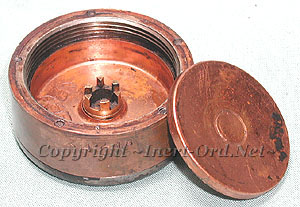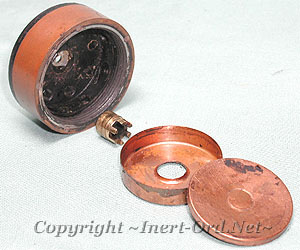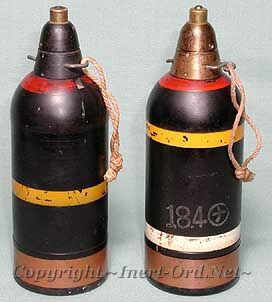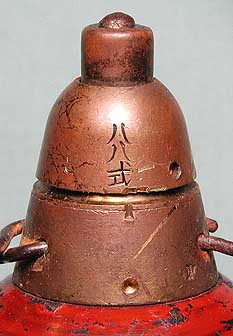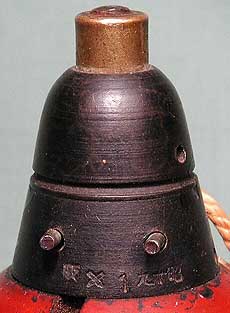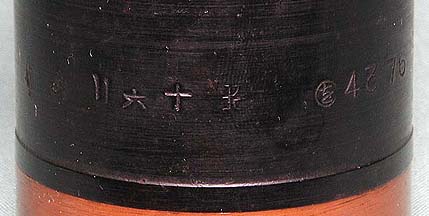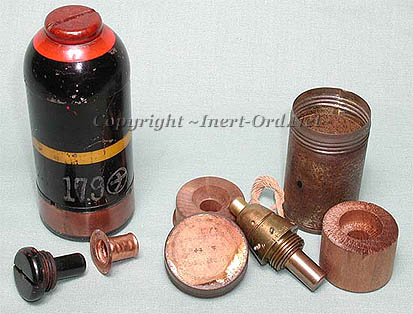
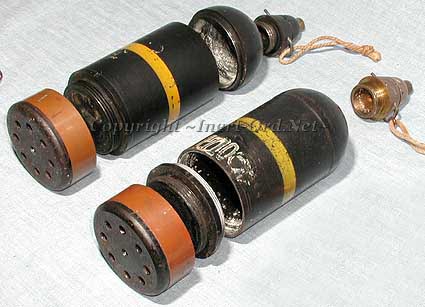
The more common (lower right) having a one piece upper body with open base and threaded base plug.
The other has a one piece lower body with threaded nose cap.
It seems that both designs were produced more or less concurrently.
The propellant "cup" is the same for both.
